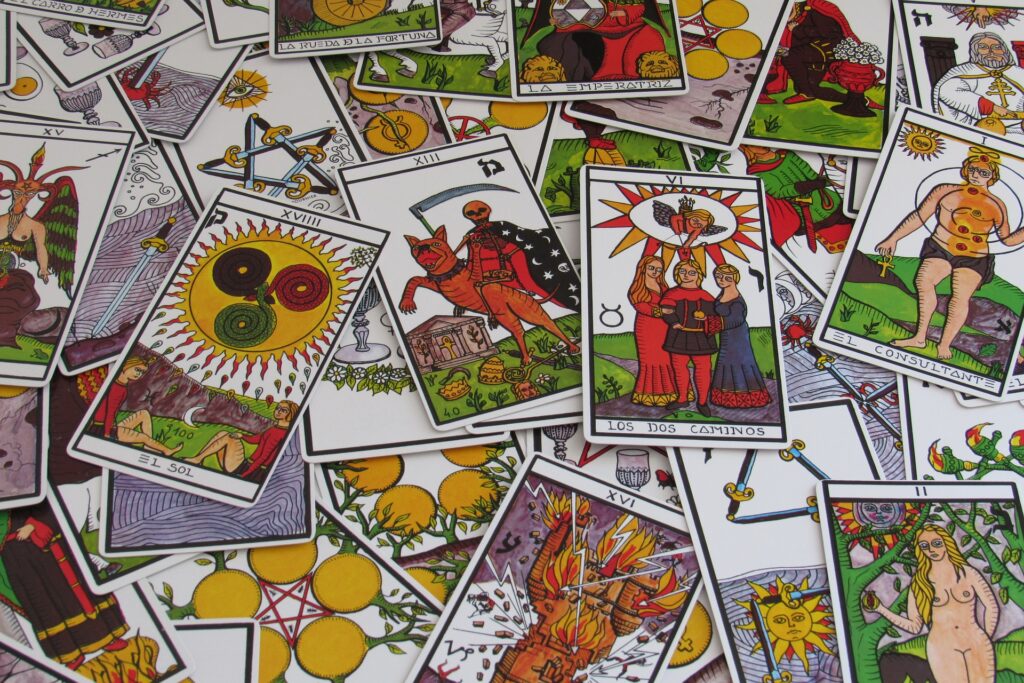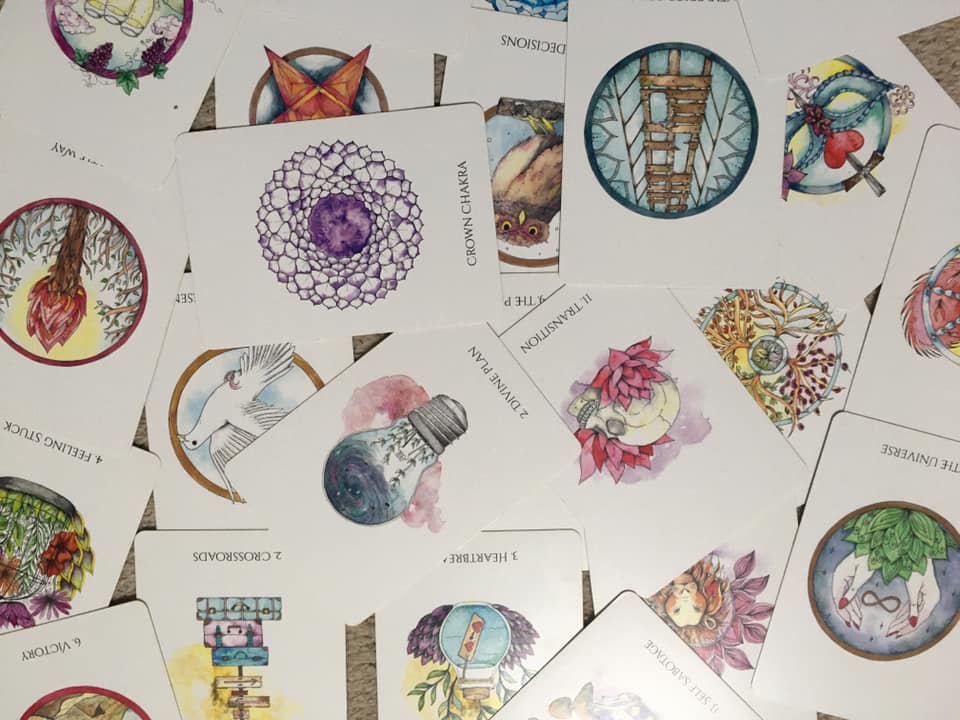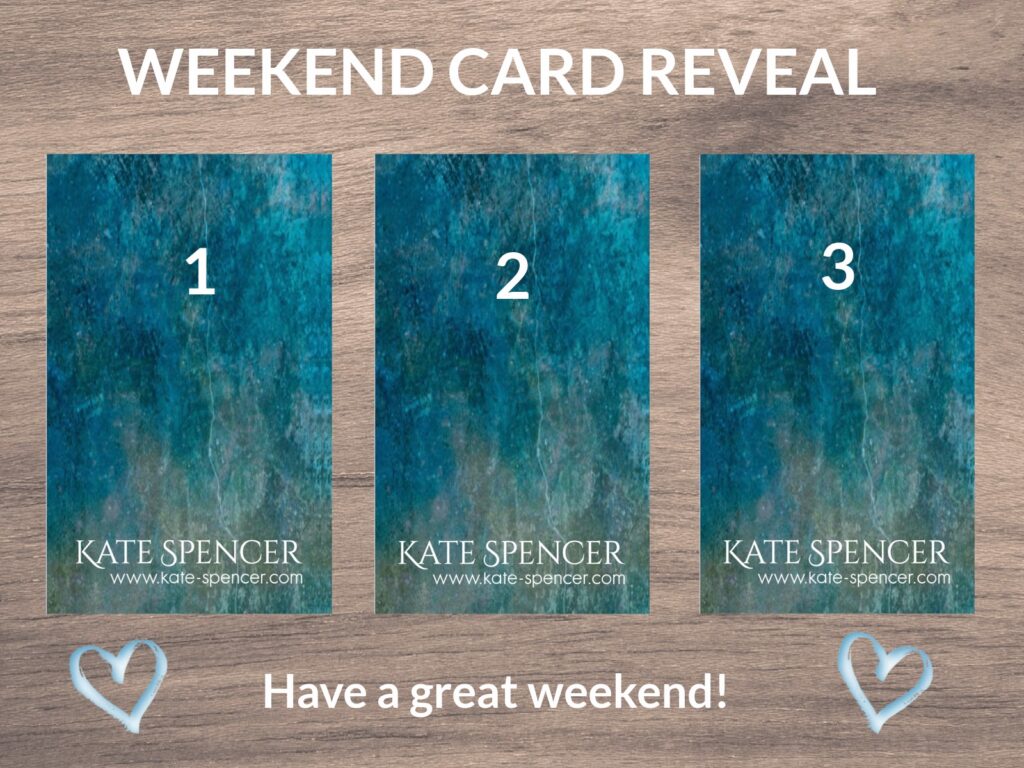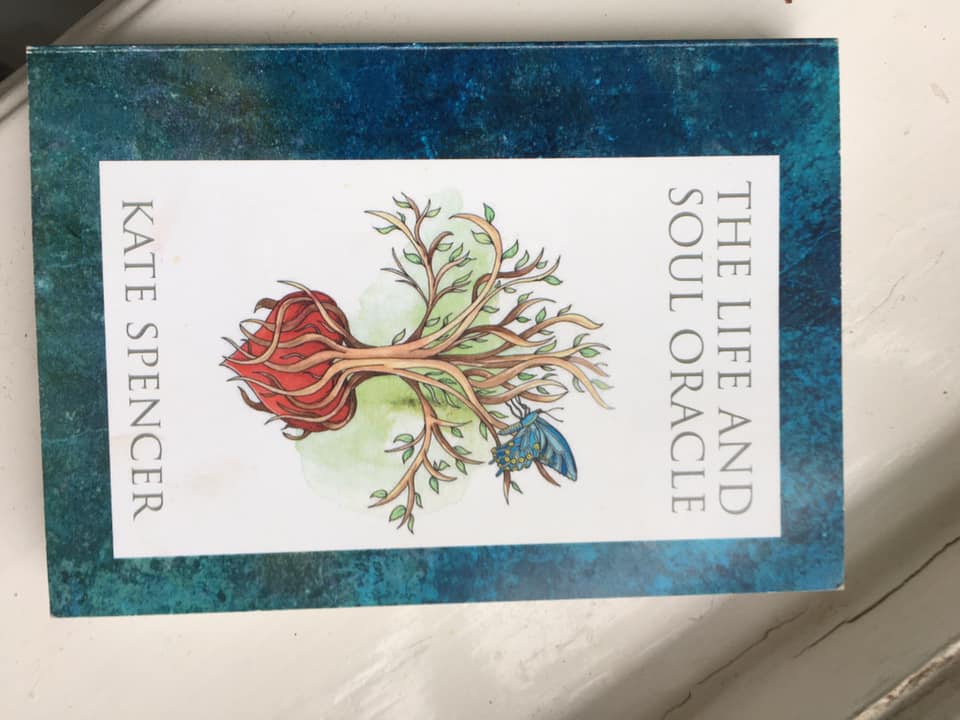I love Oracle Cards and was super excited to create my own oracle card deck, but didn’t know where to begin.
This article is a shortcut for you if you want to create, make and sell a tarot or oracle card deck.
My journey into creating my oracle card deck was a steep learning curve, just like when I self published my first book.
I had to get my mindset right initially and remind myself that if other people can do it, then so can I.
I had the resources that I needed and I could learn along the way, and you are exactly the same – I promise.
I’m sure that next time I do this its going to be easier, and you can now short cut your process by benefitting from my experience and get your own beautiful oracle card or tarot deck out into the world faster and easier that you might have done.
1) Choose a General Theme
There are so many different types of card deck out there and if you are anything like me you probably own several yourself. Oracle card decks have become more and more popular and this is why its important for you to begin by researching what it is you want to create.
If you have an existing audience you may have a customer base that will want to buy your product and this could influence what you set out to make. It’s good business sense to serve your crowd, so if you know that you have a lot of people on your mailing list that love Angels then Angel Cards could be an obvious choice.
If you are a life coach that helps with mindset and motivation then affirmation cards might suit you better.
Think about who you are going to make these cards for and what they might want.
An overall concept is important to begin with and its ok to ask your existing crowd what they already have in the way of cards and what they love, you can expand this into what they want more of and this can give you valuable insights to assist with product development.

2) The Structure of Your Oracle Card Deck
Now you have a general theme for your card deck you need to think about the structure.
Are you going to have cards that fall into different categories, sections or suits?
Tarot cards use the structure of 4 x suits of 14 cards each, making up what is known as “the minor arcana” and then 22 Major Arcana cards. Some Oracle Card Decks such as Life & Soul Oracle may loosely base its structure on the tarot, but allows for some changes and flexibility as the creator sees fit.
Other Oracle Card decks don’t follow any specific structure and that’s fine too.
3) How Many Cards?
The more cards you have the more the printing costs will be.
This is not just for the actual cards, if you choose to include a guidebook that will have more pages and be thicker so will cost a bit more and you’ll also have to have a bigger box.
These aren’t massive increases in production costs but they are to be considered.
If you have too few cards people are not going to consider the deck to be good value.
It’s worth putting some time in researching how many cards are in the type of deck you wish to create and you can start by looking at decks that you own already and also look on Amazon.
The amount of cards in your card deck may also affect weight and therefore postage costs.
4) Guidebook or Not?
I wrote the content for my guidebook myself and then I had help to edit it, typeset it and create the cover.
If you are handy with Canva or similar software you may be able to do this yourself.
The cover design of the guidebook is usually one of the images of the cards and for congruence it is the same image that is usually used on the top of the box.
Enlisting help from someone else is an extra cost but could make your product look more professional and will also take some workload off your plate.
If your card deck consists of affirmation cards, motivational quote cards or something else that doesn’t warrant a guidebook then you obviously don’t need to create one, thus saving time, energy and costs.

5) Size of Cards
I went for a standard Oracle Card size because that was the type of deck I was creating.
My crowd in many cases already owned a card deck or two and this size was congruent with what they liked and associated with this product.
6) Artwork / Design
I worked with an artist to design my card deck, giving them a rough outline and some potions of what may be included image wise for each card and then I gave them free reign to create.
Most designs did fit the bill straight away and some needed a bit of tweaking or redoing – I learned from this that I need to be a lot clearer in my communication and more specific in my brief at times.
I was possibly trying so hard to allow the artist as much creative freedom as possible that I could have perhaps been too vague on what I wanted, this led to some frustration and time wasting that could have been avoided if I’d “managed” the project better.
If you do want to work with an artist ask them how they like to work.
I think I presumed that my artist wanted more autonomy than they did, and if I’d asked the right questions at the outset about how much direction and contact they might need then things would have been able to flow more easily and faster – by the end of the project we were both flagging!
Of course this is my first adventure in creating a card deck and I did the best I could, but I’ll own the fact that I could have been more present and directive and the project would have been finished earlier and cost us both less time and energy.
You can find artists on sites such as Fiverr or find work that you like on social media and reach out.
Also- you don’t have to work with an artist to create your card deck.
Depending on the look that you want, you could design something yourself if you’re arty or you could use stock images or design packages and tweak them in software like Canva.
For example if the card deck that you want to create is about mindfulness and contains affirmation cards, then you might want to buy some specific clip art from Etsy or Creative Market Place along with a font that suits your brand and intention that could be enough. If you are not used to Canva then it could be cost effective to ask a virtual assistant to help you to create the images that you need in the correct size to upload to your chosen print company.
For the back of your cards you will need to choose a design / colour.
This is likely to be the same or a complimentary colour / deign to that of your box and for the cover of the book.
Websites like Creative Market Place have a huge selection to choose from.
You can see here that we used the same background for the back side of the cards, the main block colour of the guidebook and also both parts of the box.
We also used the font that ties in with my brand.


7) Box
My printers offered me the option of a two piece box or one that closed with a flap – more like a box of playing cards.
I went for the two piece box because it was made out of stronger cardboard and it had a more high end feel to it.
The card decks that I won are mostly in this kind of box and I knew that my crowd would have an expectation that my deck would be of similar style and quality.
You may want to consider a bar code and an ISBN for your product depending on how you are wanting to sell and distribute, if you want to go into retail outlets then this is probably going to be a good idea – do your research.
8) Printer
It is cheaper to get your card decks printed in China but at the time I was going to market we were in the middle of the pandemic and I didn’t want to risk massive delays if anything went wrong.
After shopping around I chose a printer in the UK that I had a good rapport with and I ordered samples from them to see their work. They helped me to decide on details such as rounded corners and gloss or matte finish and they were easy to work with in terms of loading up pdfs for each single card and the pdfs for the guidebook interior and cover.
They also generated a template to help with the design of the box that was brilliant.
If you need extra help with all of this many printers do offer an in house design service which is not expensive and can save you a lot of time and energy, it also guarantees a good outcome for your product.
Once you have everything loaded up its time to order your proof deck and finally hold your product in your hands.
9) Sales, Pricing & Distribution
Your printer will be able to give you your unit costs based on different quantities of card decks printed.
Once you know your unit costs you need to consider how much its going to cost per deck to post your cards and who is going to do it.
Are you going to offer international fulfilment and how much might this be for the customer?
I outsourced the distribution and paid someone a flat fee per card deck for p&p, I obviously had to factor in the cost of the postage as well on top of this for UK, Europe and USA.
I was fortunate that this was someone I trusted, but if I’d had no one in my circle like this I would have considered a fulfilment house or Amazon FBA (Fulfilled by Amazon).
I knew at the outset that I was going to sell my card decks through a Pre-Sell Model.
Once I’d costed up the unit price and postage, I knew how much potential profit there was per deck so I set my selling price and went to market. This was really useful because once I closed off the sales I knew exactly how many decks I needed to order from the printer and I had the money in the bank ready to pay for the print run.
As long as you are really transparent and tell customers how long they are likely to have to wait to get their product, this is a good strategy especially the first time.
I also had the funds to pay for p&p upfront and the money that was left over was my profit from the project.
10) Include an Email List Builder
Its smart to include something in your oracle card deck that encourages a purchaser to go to your website and download something free from you. This freebie needs to be useful to them and congruent with the product that they bought, it also needs to be GDPR compliant if you are collecting email addresses.
Examples could be a meditation or a pdf they could print out of a card spread to use with their new deck.
I hope this helps you on your creative journey!
Please ask me questions or tell me how your project is going in the comments – if I can help you I will.

Related Articles
Writing, Self Publishing & Selling Your Book
Boost Your Income With a Side Hustle
Working From Home
